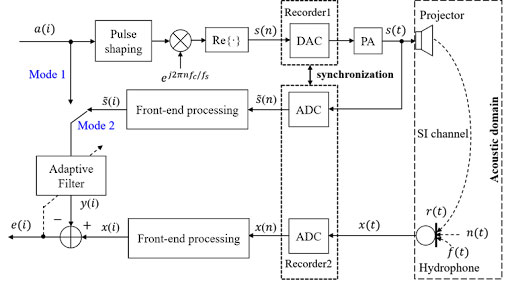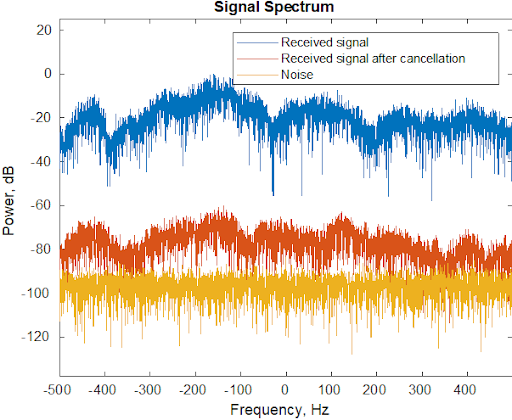Self-Interference Cancellation for Full-Duplex Underwater Acoustic systems
Underwater acoustic (UWA) communication suffers from the limited available bandwidth for data transmission.
To maximise the capacity of the acoustic links, we consider full-duplex (FD) communications, where a transceiver simultaneously transmits and receives data in the same frequency band.
The main obstacle of achieving FD communication is the strong self-interference (SI) introduced by the near-end transmission. In some communication scenarios, the SI can be 100 dB higher than the receiver noise floor. The residual SI will reduce the signal to noise ratio (SNR) of the far-end desired signal and thus degrade the system performance.
The aim of this project is to achieve a high level of SIC in FD UWA systems. The main approach applied for SIC is digital cancellation. The main factors that limit the digital cancellation performance come from the imperfections of the equipment and the time-varying nature of the UWA channels.
To address the distortions introduced in the transmit and receive chains, different structures of the digital SI canceller have been investigated. Regarding the fast channel variation due to the moving lake/sea surfaces, two approaches have been proposed; one is to use interpolating adaptive filtering algorithms which are capable of tracking the fast-varying channels, the other approach is to use multiple hydrophones for adaptive beamforming.
An acoustic-domain SIC scheme using multiple projectors has been proposed to achieve extra amount of SI in the acoustic domain before digital cancellation. Based on the experimental results, it can be concluded that a high level of SIC has been achieved with the SI canceller structure and novel adaptive filtering algorithms proposed in this work.

